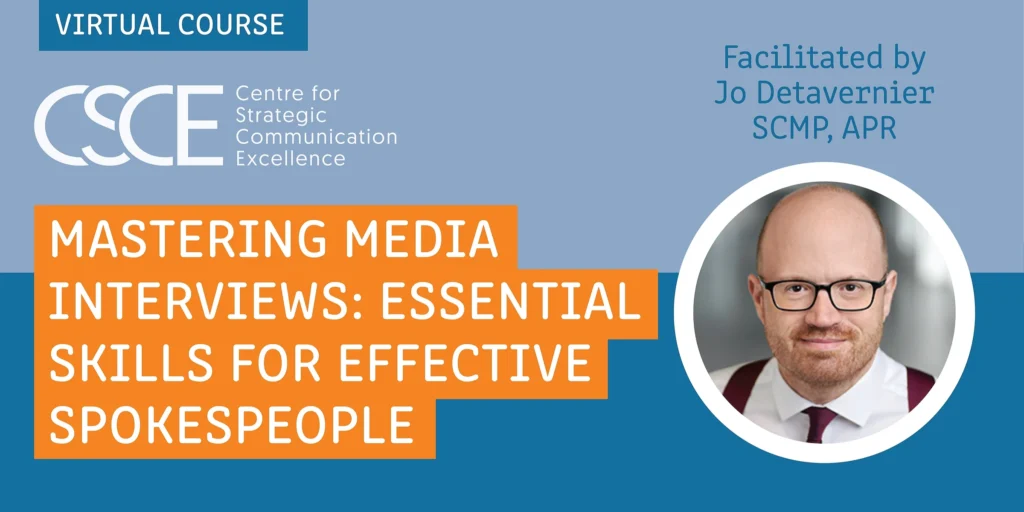Emma was a dedicated communication professional known for her exceptional creativity and tireless work ethic. She worked for a high-profile public relations agency, where the demands were unrelenting, and the pressure to meet tight deadlines was constant.
At first, Emma thrived on the fast pace and the excitement of delivering successful campaigns. She poured her heart and soul into her work, often working late into the night to perfect every detail. Her dedication was admirable, and she was praised for her contributions.
However, as the months went by, Emma began to notice changes in herself. She found herself constantly fatigued, both physically and mentally. The joy she once felt for her work was slowly replaced by a sense of overwhelm and exhaustion. Sleepless nights became more frequent, and even her weekends were spent checking emails and brainstorming ideas.
Despite the signs of burnout, Emma continued to push herself, convinced that her dedication was what made her successful. She ignored the advice of her peers who suggested she take breaks and prioritise self-care. Instead, she doubled down on her efforts, believing that if she worked harder, she could overcome her fatigue.
One day, Emma’s body finally had enough. She woke up feeling dizzy and disoriented, unable to summon the energy to get out of bed. Her doctor diagnosed her with severe burnout and advised her to take an extended leave of absence. Emma was devastated. She had prided herself on her resilience and now felt like she had hit rock bottom.
Imagine if Emma was you or someone you know. It could be any of us. It’s definitely some of us. According to Gallup’s State of the Global Workforce: 2023 Report, most employees experience burnout at least sometimes, and 28% of employees say they experience it very often or always.
In today’s fast-paced and demanding world, burnout has become an all-too-common phenomenon. Characterised by physical and emotional exhaustion, reduced performance, and a feeling of detachment from work and personal life, burnout can have a profound impact on a person’s wellbeing and overall quality of life.
Burnout is not a new concept, but its prevalence has skyrocketed in recent years. The rise of technology, constant connectivity, increasing work demands, and the global pandemic have contributed to a perfect storm for burnout. The World Health Organization (WHO) officially recognised burnout as an occupational phenomenon in 2019, highlighting its significance as a global health concern.
In my 2022 mental wellbeing study: The State of Mental Wellbeing in the Communication Profession, fatigue and stress were highlighted as the biggest contributors to a negative state of mental wellbeing. Additionally, workload and expectations, and work-life balance were identified as the top two barriers to improving mental wellbeing for communication professionals.
More than a year later, I doubt much has changed. While there are definitely organisations that get it right (and you can read about some of the best in my report), the comment below, made by one research participant, reflects an all-too-familiar state we continue to grapple with:
“The conversation on mental health in our profession is decoupled from practical ways to reduce or manage workload and work stress. It can feel like if I don’t manage all of these things, I have failed.” – In-house professional, Australia
What causes burnout?
Burnout is often the result of prolonged and chronic workplace stress, and several factors contribute to its development, including:
- Workload: Excessive workloads with unrealistic expectations and tight deadlines can overwhelm even the most resilient individuals.
- Lack of control: Feeling powerless or lacking control over tasks and responsibilities can lead to frustration and burnout.
- Lack of recognition: When hard work goes unnoticed or unappreciated, it can erode motivation and contribute to burnout.
- Work-life imbalance: An inability to maintain a healthy boundary between work and personal life can lead to chronic stress and exhaustion.
- Job mismatch: People who find themselves in jobs that don’t align with their values, skills, or interests are more susceptible to burnout.
Add ineffectual leadership and poor communication and change management to this list, and you have a recipe for disaster.
The impact of burnout goes beyond the individual; it affects employers, families, and society. For individuals, burnout can result in physical symptoms such as headaches, insomnia, and increased susceptibility to illnesses. Mental health can also suffer, leading to anxiety, depression, and a reduced sense of accomplishment. In the workplace, burnout can lead to decreased productivity, increased absenteeism, and higher turnover rates, ultimately affecting an organisation’s bottom line.
Back to Emma’s story.
During her time off, Emma had a chance to reflect on her journey. She realised that her relentless pursuit of success had come at a cost: her health, her relationships, and her own sense of wellbeing. With the support of therapy, she learned to set boundaries, delegate, and prioritise self-care.
As Emma gradually reintegrated into work, she approached her tasks with a new perspective. She was still committed and driven, but she now understood the importance of balance. She took breaks, pursued hobbies, and spent quality time with loved ones. Her creativity flourished even more when she allowed herself moments of rest and rejuvenation.
Emma’s story became an inspiration to her colleagues, and the culture at the public relations agency began to shift. Leaders recognised the need for a healthier work environment, encouraging employees to take care of themselves and offered resources for managing stress. Emma’s journey through burnout served as a wake-up call, reminding everyone that success should not come at the expense of wellbeing.
If you’re a leader you have a responsibility to build trust and connection with your people and ensure they have a psychologically healthy and safe work environment. In many countries and states, employers must do this by law. However, organisations shouldn’t be working from just a compliance base, as this can breed mistrust and misalignment. If appropriate interventions and measures for psychosocial safety and wellbeing aren’t in place, now is the time to start.
Building cultures of care the antidote to burnout
“The cure for burnout is not self-care, it’s all of us caring for each other.” – Emily and Amelia Nagoski, in their book Burnout: The Secret to Solving the Stress Cycle
The bottom line is, we are stronger together. Collectively we need support and care from others who take our emotional and physical needs into consideration. When this happens, we create and support a psychologically safe environment where people feel they belong, can thrive, and do their best work.
Research from The Leaders Lab shows that when it comes to workplace safety, care beats compliance, and workplaces that invest in building cultures of CARE are significantly more likely to report higher levels of individual, team and workplace performance. The research also found that by integrating CARE behaviours into their existing routines (their team processes), rituals (their team practices), rules (workplace policies) and role modelling (their own behaviours) leaders can create a culture of CARE without adding one more thing to their to-do list.
According to The Leaders Lab, a culture of CARE is where leaders express:
- Compassion – reaching for curiosity and generosity, rather than rushing to judgments about each other, to support learning and allyship.
- Appreciation – encouraging the asking for and giving of help to harness people’s individual and collective strengths and reduce wasted time and effort.
- Responsibility – inviting ownership, clarifying commitments, and holding people accountable instead of indulging incompetence or settling for half-hearted compliance to prioritize growth.
- Emotional wisdom – viewing emotions – even the uncomfortable ones – as “information” to be understood to help navigate the feelings of thriving and struggle to fuel resilience.
Their research also shows that workers who say they often feel psychologically safe in their teams are significantly less likely to be experiencing any psychosocial hazards. They were also significantly less likely to report feeling burnt out. And that’s because psychological safety facilitates openness and honesty, vulnerability, and learning together.
In their free leadership toolkit: Leading with Safety and Care, The Leaders Lab says that when it comes to creating a culture of psychological safety, “the work is both within and between us, at the “Me (individual)”, “We (leaders and teams)” and “Us (organisation)” levels.”
- At the “Me” level, building “personal portable psychological safety” can help us navigate challenges and uncertainties with a greater sense of confidence and calmness. This includes being kinder to ourselves when thing don’t go as planned, owning our mistakes, and reminding ourselves that everyone makes mistakes. It also includes being vulnerable enough to ask for help when you need it.
- At the “We” level, building “team psychological safety” – i.e., shared beliefs that it’s safe to speak up, take risks, and learn alongside each other – makes it easier for us to collaborate, innovate, and grow.
- At the “Us” level, building a supportive organisational environment which provides the resources we need to not just meet the demands of our jobs, but to excel.
So, the question we should be asking ourselves is: How is my organisation building psychological safety at the “Me”, “We” and “Us” levels and what can I personally do to help myself and my colleagues?
And so, Emma’s tale serves as a powerful reminder that in the pursuit of our goals, we must also nurture our own selves, for true success is built on a foundation of balance, self-care, and a deep understanding of our own limits.
As mental wellbeing writer, speaker and advocate Katie Reed said:
“Self-care is giving the world the best of you, instead of what’s left of you.”
The Centre for Strategic Communication Excellence is here to help.
Having time away from work is good for your soul. It provides the opportunity to not only rest and recuperate but also gives you a chance to self-reflect and check-in on your life’s purpose. In fact, an EY study conducted in the US and Canada showed that for every additional 10 hours of vacation time that employees took, their year-end performance improved 8%.
We have the perfect solution. Our Totally ALIVE Bali luxury wellbeing retreat for communication professionals and business leaders. This retreat is more than a pamper session. We’ll take you through a process of reflection, reset, re-imagination and action taking to build a personal leadership plan for the year ahead. You’ll also receive your own tailored Emotional Capital Report (which focuses on the 10 dynamic emotional skills that drive leadership success). Develop a plan to grow your leadership from a place of aliveness and ease, rather than “hard work”.
Take advantage of our early bird discount and save $AUD 1,000 off the total price when you book and pay by the end of August. Payment plans are also accepted.
Contact us to reserve your place or learn more – but get in quick as there are limited spots. It’s time to feel totally ALIVE.





